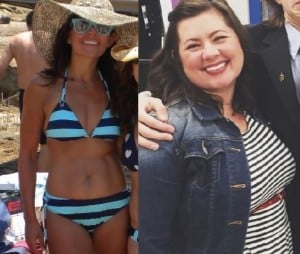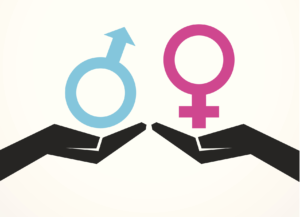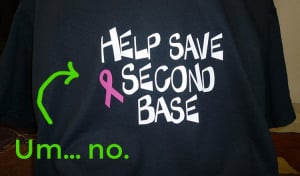
Source: Huffington Post
Women aren’t the only people who need access to abortions.
I’m trans, and I am personally affected by anti-choice legislation. I am directly harmed by the removal of the buffer zone, the implementation of internal ultrasounds, the dwindling number of health clinics in the South, and by misleading literature distributed by crisis pregnancy centers.
The “War on Women” is a war on me, but I’m not a woman.
I volunteer my time to further access to reproductive healthcare and education. I’ve spent over five years clinic escorting, canvassing, and tabling. I’ve attended speak-outs, protests, vigils, and repro rights conventions.
But it’s really difficult to be present in a movement that is so incredibly cissexist.
The fact of the matter is that trans men/ masculine people and nonbinary people (like myself) are severely underrepresented by the mainstream dialogue about reproductive rights, and this needs to change.
Some trans people have abortions. Some trans people need access to birth control. Some trans people could use the clinic access to get hormone replacement therapy. So why is it that in the five-plus years I’ve been involved in this movement, no one has bothered to even mention people like me?
It has always felt somewhat hypocritical to exist as a trans person in a movement that doesn’t acknowledge me.
The narratives most often used to spread reproductive justice awareness always center the discussion on “Women’s Rights.” But since I’m not a woman, I’ve felt very disconnected from the spaces I work in.
Plenty of people involved in this type of organizing are aware of the existence of trans people, and everyone I‘ve worked with has known of my nonbinary/ trans status. Everyone knows my pronouns are gender-neutral, that I am to be referred to using only gender-neutral titles, and that I explicitly ask that conversations about healthcare access be inclusive of all gender identities. I expressly shape and correct language in the presence of RJ activists to push them to think outside of the binary.
Unfortunately, these interpersonal efforts haven’t permeated the mainstream media.
I was twenty when I had a medicinal abortion, and I have been on some form of birth control since that time. Even though the ability to reproduce hasn’t always been a factor with the partners I have had, I like knowing that I have a back-up plan and hormonal regularity. My birth control has also meant a lot even in terms of dampening my dysphoria.
So why does the popular reproductive rights discourse erase me? Why do they capitalize off my work, but never give me or other trans people the visibility we so desperately need?
Even the intake forms at my local Planned Parenthood are incredibly trans-exclusive! When I went to Planned Parenthood to get birth control I wasn’t given the option to state my preferred name or personal pronouns. It was up to me to decide whether or not that clinic was a safe place to disclose my status and there was no indication I would be treated warmly if I were anything but a cis woman. So I let the staff make their assumptions and walked out feeling very much alone.
“Speak-Out”s have proved to be the only time I’ve been able to successfully address concerns about the lack of trans representation. The structure of a Speak-Out makes sharing your abortion story easier since no one can interrupt you and no one is to make comments or approach you about your story after you have shared it. It’s at these events that I make a point of sharing because not only is it important to let those in attendance know that there is nothing to be ashamed of, but also to be a visible trans person of color in a room of cis women whose only focus is other women assigned female at birth.
If my fellow feminists want to continue to support gender equality, it’s imperative that they realize that there are more than two genders and that no, the other genders aren’t just transman/transwoman.
Changing the cis-nomative atmosphere is difficult, but there are some steps that individuals and organizations can take to improve this lack of intersectionality.
1. Think Actively About Your Use of the Word ‘Women’
You might love your new hashtag or slogan, and it might be pretty catchy, but take a moment to remember that the “War on Women” really only means one type of person: cis-women.
“A Woman’s Right to Choose,” “Women’s Health,” and “Women’s Access” are all phrases that erase me and others like me.
Using “women” as a catch-all term for “people with active uteruses” is incredibly problematic (and also, don’t reduce people to body parts).
Remember basic diversity training: Not all women can have/want to have children. Not everyone who gives birth identifies as a woman. Health clinics whose main concern is reproductive health can (and do!) cater to people other than women.
2. Try Using Gender-Neutral Language
This applies to press junkets, intake forms, slogans, legislation, media, and even the things you might shout at a protest.
When I was a sophomore in college, there was a march around campus that I took part in that highlighted the right to choose. One of the chants mentioned the united efforts of men and women. Being as I was one of the only visible queers at the march, I made a point to shout “AND NEITHER AND BOTH” in the pauses between “men and women” and “united.”
Eventually, I became vocal enough to influence a complete change of chant.
Now imagine what kind of systemic change we could influence with our voices on a broader level.
If you’re having some issues expressing groups of people who are affected by reproductive justice movements, I created a simple acronym for you. While some people might say “those with a uterus” or “uterus-bearer,” because there is some racial historical context behind those semi-dehumanizing phrases, I coined FARS and MARS. These stand for “Female/Male Assigned Reproductive Systems” respectively.
The FARS/ MARS system works to include trans and intersex people, while acknowledging the decades of medical violence and resource extraction aimed at women of color.
3. Remember: You Cannot Guess Someone’s Identity by Looking at Them
You cannot guess someone’s biology, personal gender pronouns, gender identity, or sexual preferences based on how they look.
Presentation isn’t always traditionally congruent with someone’s identity.
Be mindful of that and be sure to ask what personal pronouns they use.
Don’t assume that because someone is feminine that they are a woman regardless of their assigned reproductive system. Don’t use that femininity to make assumptions about why they are a part of the reproductive justice movement or why they might be in a health clinic.
If you aren’t catching my obvious personal feelings, I’ll make clear that I’m a femme nonbinary person who deals with this all the time. Make my life a little easier. C’mon.
4. Make an Effort to Expressly Mention Trans People
We, too, access reproductive health clinics and work tirelessly to ensure the right to choice for all. And I love well-deserved recognition.
I love even more the well-deserved recognition of marginalized minority groups who never get the visibility they need.
If repro justice discourse openly discusses the existence of trans people, then you have possibly added allies, given trans people respect, and modeled your movement as an inclusive one.
Win, win, win for everyone!
***
Yes, cisgender women are marginalized for being women. Yes, being female only adds to the systemic oppression you’re likely to face.
But it’s important to remember that being a woman and being female (or having a Female Assigned Reproductive System — see what I did there?) aren’t mutually exclusive.
[do_widget id=”text-101″]
Jack Qu’emi is a Caribbean, nonbinary queer, and a deep appreciator of all things glitter. They are an occasional blogger, queer-oriented sex education facilitator, and frequent volunteer.You can find them on Twitter @jackquemi.
Search our 3000+ articles!
Read our articles about:
Our online racial justice training
Used by hundreds of universities, non-profits, and businesses.
Click to learn more




















